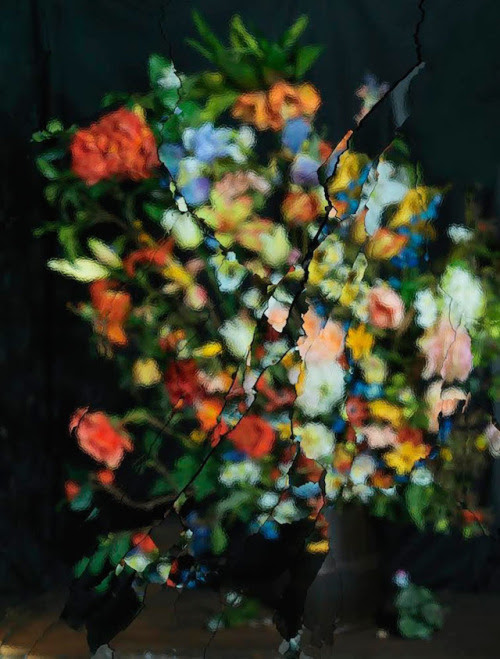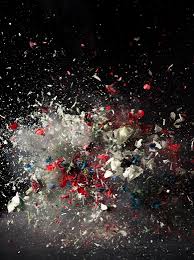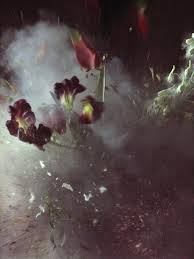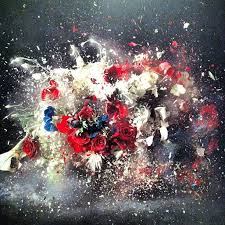
14 February 2016 – Ori Gersht is an Israeli fine art photographer. He is a professor of photography at the University for the Creative Arts in Rochester, Kent, England. He turns his lens on sites of collective trauma, violence, and loss, examining the powers of time and landscape to preserve and erase history. His subtle, quietly beautiful photographs and videos taken in Bosnia, Auschwitz, Ukraine, and Hiroshima infuse seemingly normal landscapes with an eerie aura that hints at the location’s past.
He is quite well-known for a haunting dual-projection video work he did in 2011 entitled Will You Dance For Me? which juxtaposes a Holocaust survivor recounting her story with an empty winter scene, explicitly imbuing the landscape with her words. Here is a very short clip from the 15 minute piece:
Ori Gersht, Will You Dance For Me, 2011 from Noga Gallery of Contemporary Art on Vimeo.
I first became familiar with him through a series of works on exhibition entitled Blow Up where he imagined the confluence of technology and artistic production at its logical extremes, reconstructing classic still life compositions of flowers and fruit only to explode them and capture the moment of destruction with a high-speed camera:
His latest series is based on a visit to the Kunsthistorisches Museum in Vienna (where I am spending this weekend) where Gersht became fascinated by three early seventeenth century paintings by Jan Brueghel depicting vases of flowers. He coupled this with his focus on the flat surface of a mirror. This mirror is reflecting what appears to be one of Brueghel’s paintings, but this image is an illusion – not only because it is seen in a mirror, but also because what is being reflected is not a painting, but a replica, meticulously crafted by hand from artificial flowers, of the bouquet depicted by Brueghel.
It is a comment upon the nature of the original painting in which Brueghel chose not to depict wild flowers, but cultivated ones. All the flowers are shown in their most perfect form and the depiction of the simultaneous perfection of so many species that bloom in different seasons and in far flung geographically locations – a fantasy of a desirable, but never attainable reality – is an assertion of the power of art and craft, alongside the power of science and technology, to remake the world of objects. It also undermines traditional notions of time and place.
The Mummery + Schnelle gallery in London, which showed a detailed exhibition in 2014-2015, explained it as follows:
Having placed the replica of Brueghel’s floral bouquet in front of a mirror, Gersht next positioned two hi-definition digital cameras, focusing them on two different optical planes: one close up on the glass surface of the mirror, the other – from a distance of three metres – on the reflection of the vase of flowers. The mirror was then broken using either hammers or small explosive charges, shattering it into a maelstrom of flying fragments of reflective glass.
In contrast to the laborious and meticulous processes that led to the creation of the replicas of the bouquets in Brueghel’s paintings, the compositions that were captured by the camera at the instant of the shattering of the mirrors were rapid and unpredictable. The use of the two cameras allowed Gersht to capture simultaneously two contrasting views of the same event. Because of the different focusing points and the limited depth of field, each camera captured an alternative reality, questioning the relationship between photography and a single objective truth. The final photographic prints simultaneously embrace rigorous and painstaking craft and the mechanical instantaneousness of the digital camera. Gersht raises the question of whether the camera records, or creates, reality. What appears to be real here is merely a reflection and its shattering is so instantaneous that the eye, without the aid of the camera and the flash, cannot properly see it. It is only made available to us through the mediation of optical technology. The work of Ori Gersht has been described by the critic David Chandler as a meditation on the poetics of fragility. In his latest series we are reminded that all images are transitional. They show us nothing more – for certain – than the absence of the object of representation.


